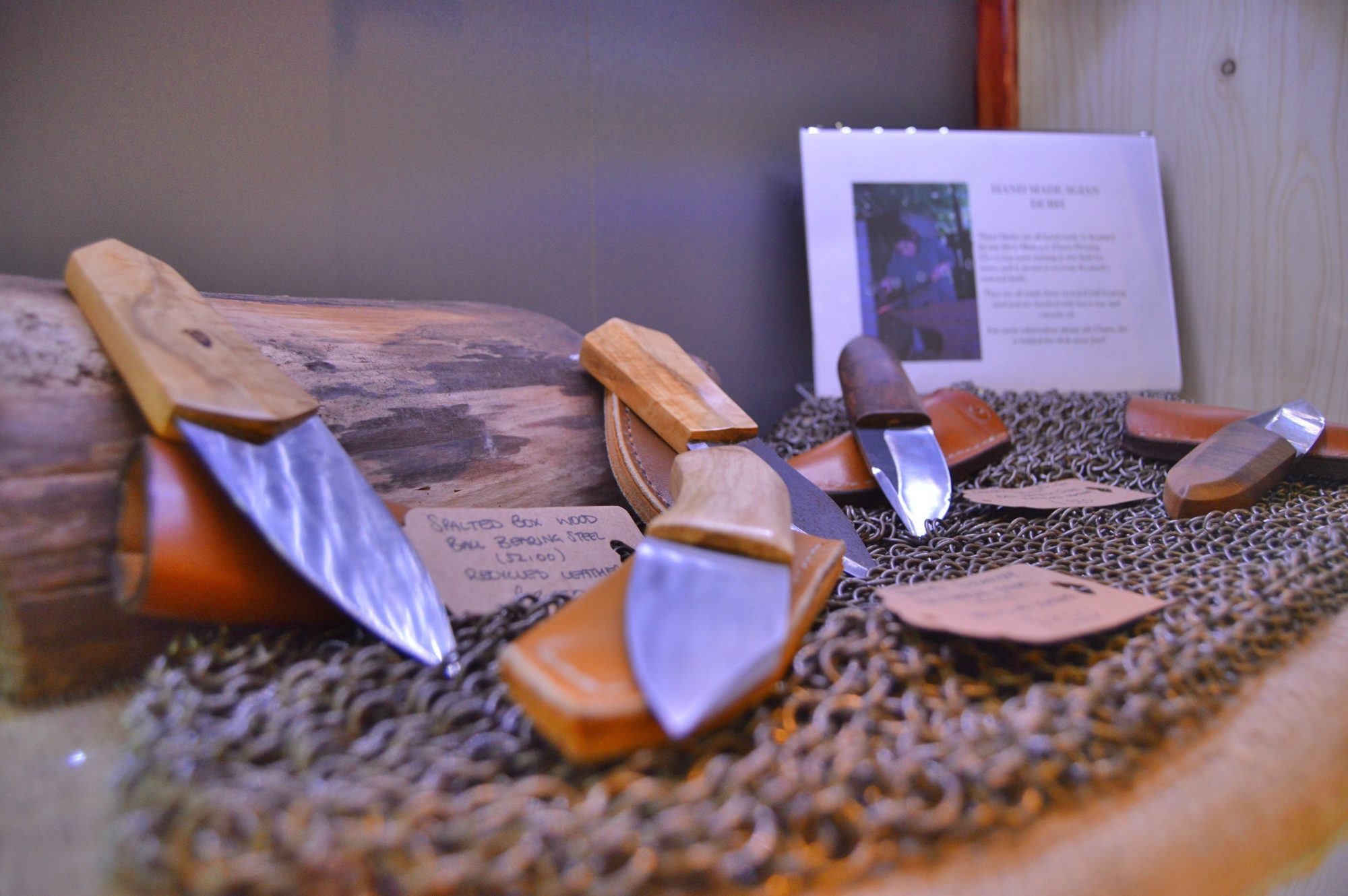Have you ever wondered what the knife is that is tucked into a Scotsman’s kilt hose? It is called a sgian dubh (ski-en doo) and, despite its size, it has great importance as part of the legacy and the history of the Scottish Highlanders and their way of life. Nowadays, the three-to-four inch single edged knife is used purely as a decorative item whilst wearing traditional Scottish dress.
Where does it come from?
There are many tales about the origins of the sgian dubh. However, the most popular theory is that it originated from the ‘sgian achlais’ which translates to ‘armpit knife’. This was a slightly larger knife carried by the Highlanders and was worn underneath their jacket. In the 17th and 18th centuries it was customary for Highlanders to reveal any hidden weapons to their friends or acquaintances when entering their home. So, they would remove the sgian achlais from their jacket and place it at the top of the kilt hose. This meant it would be visible, but still within reach if needed!
For those wondering where it’s complicated-sounding name originated from, sgian dubh means ‘black blade’ in Gaelic. Some people think this means that the material used to craft the handle of the knife was a dark wood. However, most people believe that the connotations ‘hidden’ for the word black, means the sgian achlais was the inspiration for this knife.
The modern day sgian dubh
These days the sgian dubh has become an ornamental piece, usually created with many embellishments, carvings and symbols. And, those wearing kilts to weddings, celebrations and events, wouldn’t feel complete without one! However, as the sgian dubh was originally used for protection, hunting and cutting materials, the historical sgian dubh would have been a simpler knife.
Shop manager for The Knight’s Vault and professional bladesmith Charis Fleming is bringing the knife back to its origins with her own hand-crafted sgian dubhs. Charis uses her own vision of what the sgian dubh would have looked like in the 17th and 18th centuries to create a more accurate representation of this historical knife.
Why not take a look at Charis’ handmade sgian dubhs here?



